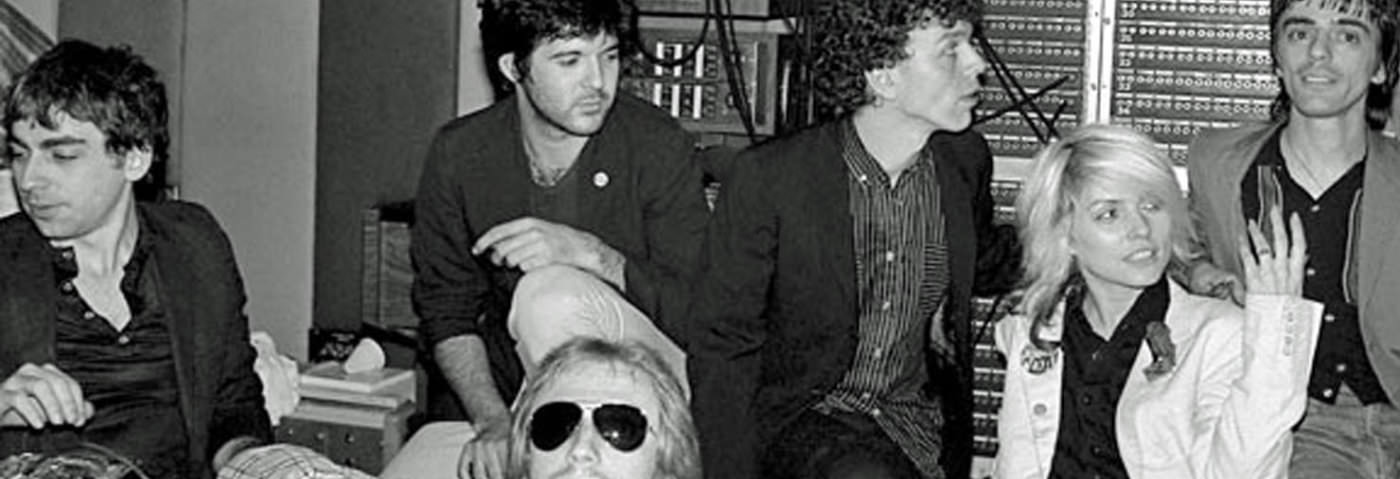It’s interesting that even with the advent of MIDI – and the flexibility it bought to a number of forward-thinking producers – old-school methods were still employed to merge the new technology with the tried and tested techniques of old. So the keyboard string parts for Stevie Wonder’s ‘Pastime Paradise’ weren’t simply recorded DI. Instead, Wonder’s Yamaha GX-1 was amped to record each separate string line as if it were a real cello or violin. The effect is more natural, more real – more soulful.
The closest many dance producers get to dealing with ‘real’ instruments is when they employ a vocalist – perhaps the occasional guitar line. But there’s so much more we could be doing. Taking a portable digital recorder out and about to generate found-sound and noise loops will give you a library of unique samples unavailable to anyone else. Setting up a cheap mic to record your own percussion parts is even easier.
There’s a great quote from engineer Stephen Hague in the chapter on New Order’s ‘True Faith’, as he explains his decision to mic (rather than DI) Peter Hook’s bass part: “I wanted to include a speaker of some sort so the bass would be moving some air,” he says; he wanted to create sound waves and then capture them as living, moving things. We don’t do enough of that. And I believe our productions are the poorer for it.
3 – Experimentation has always been key
One thing we as electronic musicians do better than anyone else in the industry is move with the times. We set the musical agenda that the charts follow months, often years, later. Part of this is the adoption (and abuse) of new technologies, with – almost uniquely – entire genres being spawned from single pieces of kit. Reading Classic Tracks puts this spirit of experimentation in a historical context.
From the earliest pioneer, Les Paul, and his first multi-track recording, through the work of The Beatles (pioneering everything from double-tracking to flange) and beyond, the world of rock and pop recording is jam-packed with engineers, producers and technicians driven to break boundaries, to make sounds that no one had heard before. The cutting edge bristles and hums with the obtuseness and imagination of hundreds of pioneering tech-heads who married a creative vision with a desire to forge a path entirely new.
That spirit is nicely summed up by Ken Scott, engineer for many of the early Beatles sessions at Abbey Road: “I remember Paul McCartney and I would go into the mic storage room and he would find a mic that he thought looked good and we’d have to use it. ‘Oh, I like the look of that one,’ he’d say. It was a case of putting different mics in different places. Like on the piano, we’d do everything, from putting the mic above it to underneath it – we’d probably try placing it up the pianist’s arse at some point!”
The cutting edge bristles and hums with obtuseness and imagination.
In many ways we, as electronic musicians, encapsulate this spirit of experimentation, carrying forward the myriad legacies of the thousands of engineers before us who were unwilling to settle for the status quo. The very finest producers today are usually those who don’t just reach for presets but envisage whole new uses for the ever-growing armoury of technology – hardware and software – available to us.
4 – Quest for perfection
Don McLean recorded 24 takes of his lead vocal for ‘American Pie’. Dire Straits recorded the entire Brothers in Arms album with their own drummer, Terry Williams, before producer Neil Dorfsman persuaded Marc Knopfler to send him home and re-record the whole thing with session man Omar Hakim. Justice spent five months cutting and slicing samples for ‘D.A.N.C.E.’ in what must surely be one of the most intricate sample-editing jobs of our times.
Throughout the chapters of Classic Tracks, the quest for something as close to perfection as the artists and engineers could achieve is detailed time and again.
In today’s music industry, characterised by ever-tighter deadlines and ever-lower budgets, I worry that the drive for perfection and dedication to a creative ideal has taken a back seat (which is ironic, given how much easier the tools available to us have made the realisation of perfection). Of the many thousands of new releases that hit the record stores each week, how many are really as good as they could or should be? How many producers go the extra mile, deliver that painful extra 10%, rather than just bouncing out the master when it sounds ‘good enough‘?

06.54 PM
Great and inspiring article1
01.57 PM
What a fantastic subject to read about. I’m working on a track right now and I thought I’m taking ages knowing that the most parts were written in an hour. I’m not saying I’m writing a classic but I want every part of it to be good enough to be part of the track/song. Transitions, drops, fx, vocals, mixing, levels. Everything. I rather write 10 good songs in my life than 100 crappy ones.
05.53 AM
Yeah man.
Make dance music without trying to sound like dance music.
08.34 PM
Nice article. But I need to point out that Dire Straits didn’t have an album called “Money For Nothing”. It was called “Brothers In Arms”.
10.46 AM
Steve – I stand absolutely corrected. Text amended. Thanks 🙂